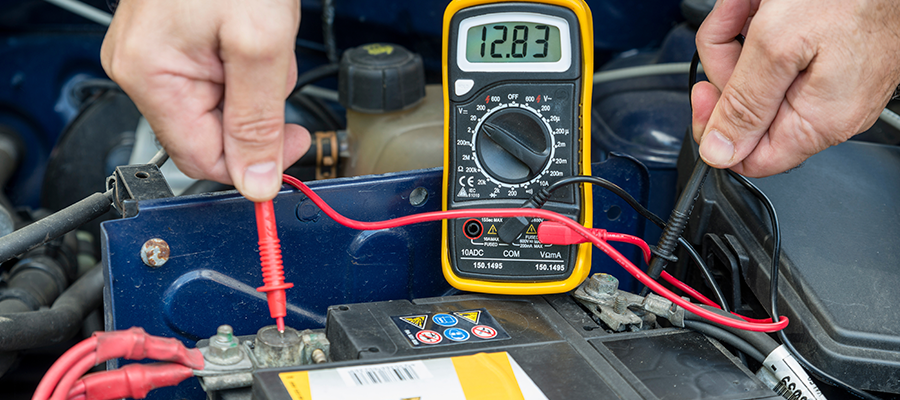
Testing your batteries
Visual inspection alone is insufficient to determine the battery's overall health. Open-circuit voltage and specific gravity readings (for flooded batteries) can indicate the battery’s charge level, age, and health. Routine voltage and gravity checks will not only show the state of charge but also help spot signs of improper care, such as undercharging, overcharging and over-watering in the case of flooded batteries, and possibly even locate a bad or weak battery. The following steps outline performing routine voltage and specific gravity testing on batteries properly.
Specific Gravity Test
DO NOT ADD WATER BEFORE TESTING (Flooded batteries only)
- Fill and drain the hydrometer 2 to 4 times before pulling out a
- There should be enough sample electrolyte in the hydrometer to completely support the float.
- Take a reading, record it, and return the electrolyte to the
- The OCV of the tested cell will be the specific gravity reading + .84
- Example 1.22 s.g. + .84 = 2.06V
- To check another cell, repeat steps 1 thru 3 above.
- Check all cells in the
- Replace the vent caps and wipe off any electrolyte that might have been
- Correct the readings to 80oF:
- Add .004 to readings for every 10o above 80o F, ( 6o above 26o C)
- Subtract .004 for every 10obelow 80oF, ( 6o below 26o C)
- Compare the readings
- Check the state of charge using the “Open Circuit Voltage” table
- The OCV of the tested cell will be the specific gravity reading + .84
- Example 1.22 s.g. + .84 = 2.06V
The readings should be at or above the factory specification or 1.280 ± .005. If any specific gravity readings register low, then follow the steps below:
- Check and record voltagelevel(s).
- Put battery(s) on a complete charge.
- Retake specific gravity readings.
If any specific gravity readings still register low, then follow the steps below:
- Check voltage level(s).
- Perform equalization charge. Refer to the Equalizing section for the proper procedure.
- Retake specific gravity readings.
If any specific gravity reading still registers lower than the factory specification or 1.280 ± .005, then one or more of the following conditions may exist:
- The battery is old and approaching the end of its life.
- The battery was left in a state of discharge for too long.
- The electrolyte was lost due to spillage or overflow.
- A weak or bad cell is developing.
- The battery was overwatered previous to testing.
- Batteries in conditions 1 - 4 should be taken to a specialist for further evaluation or retired from service.
